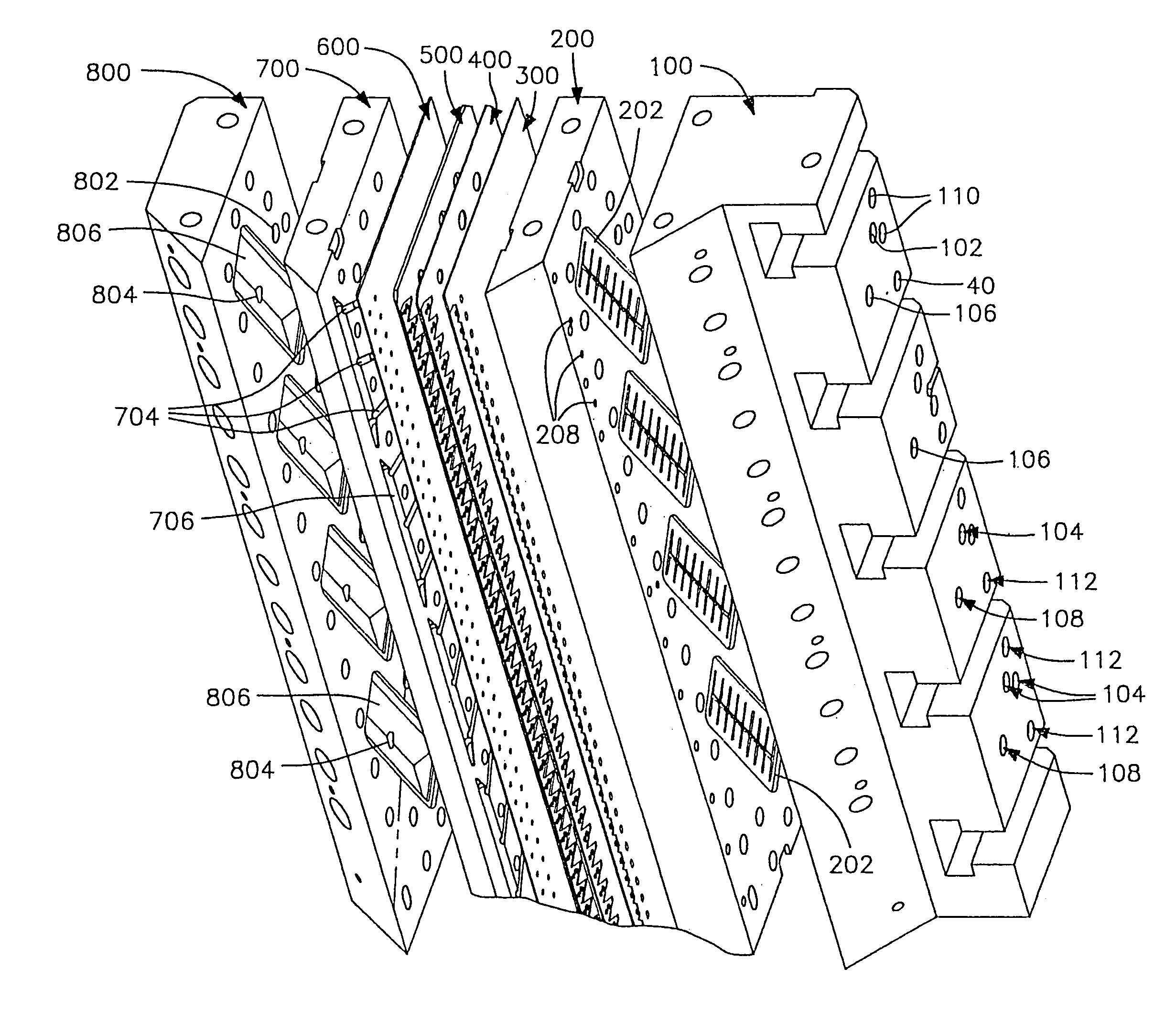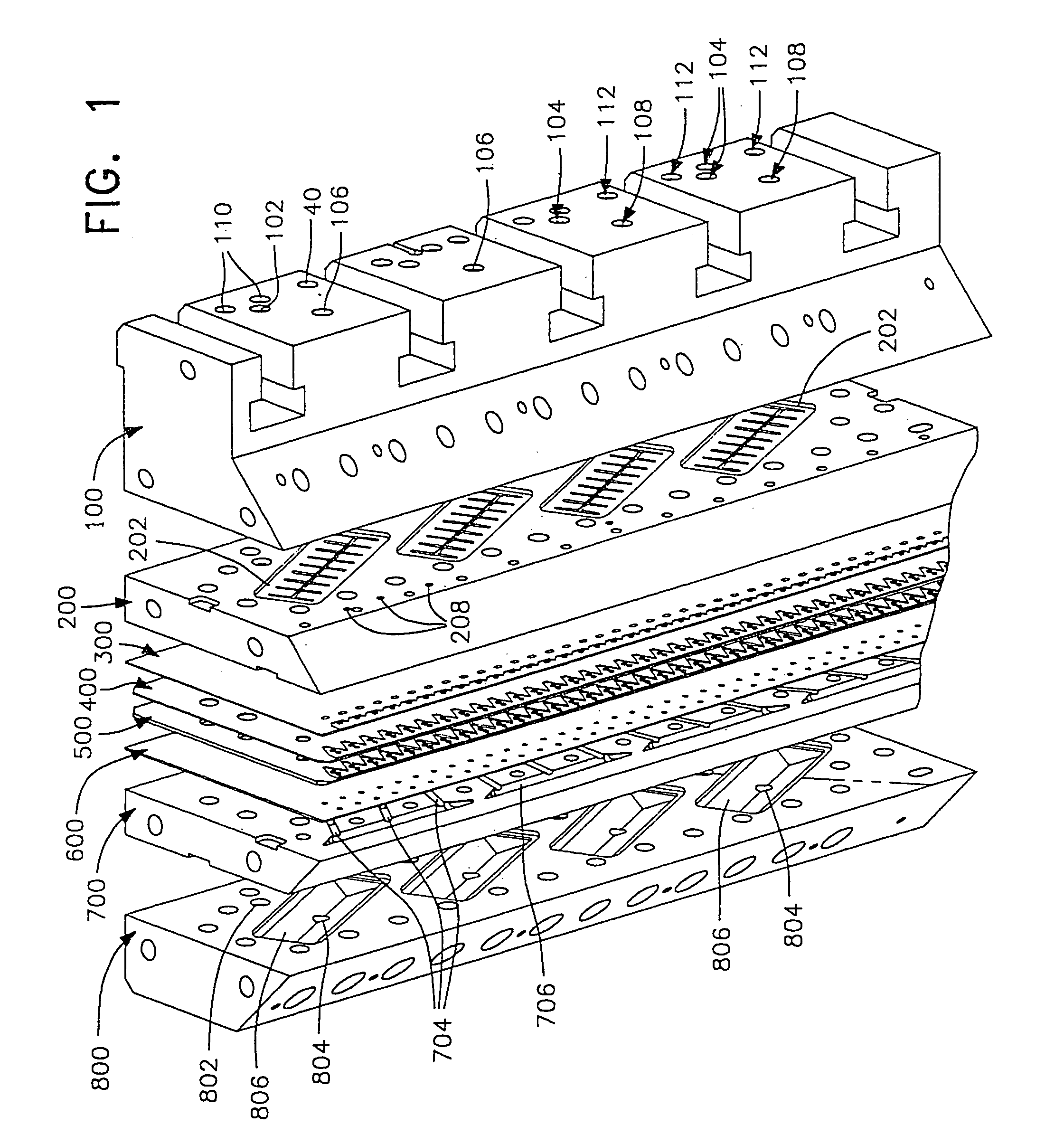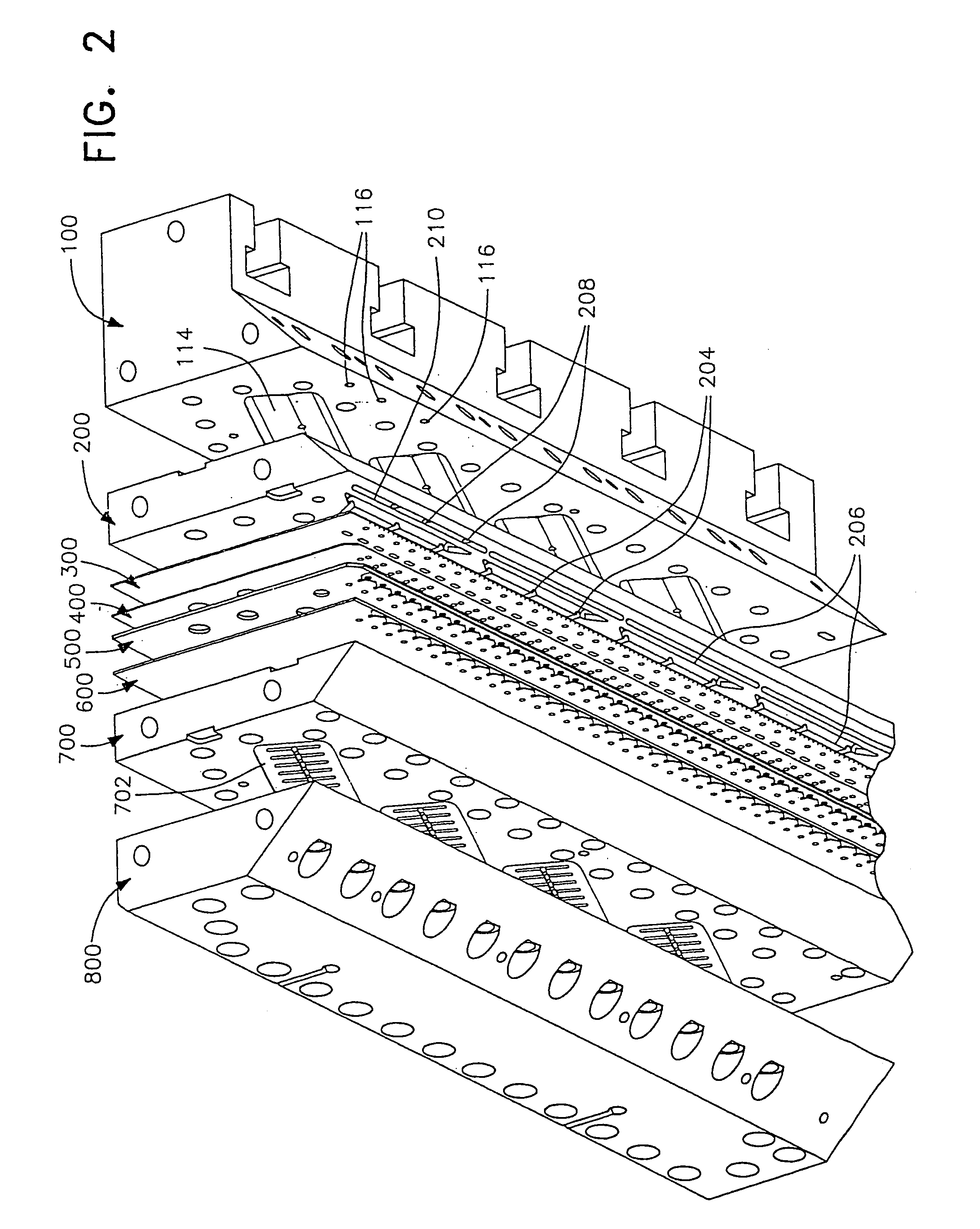Method and apparatus for spinning a web of mixed fibers, and products produced therefrom
a technology of mixed fibers and methods, which is applied in the field of methods and equipment for extruding or spinning synthetic fibers, can solve the problems of not being able to recognize the advantages of directly spinning a homogeneous or uniform mixture of fibers from a spinning device, and the techniques and equipment currently commercially available are not adapted to produce such a homogeneous web of mixed fibers. , to achieve the effect of preventing undesirable contaminants, extending the useful life of mechanical ventilation
- Summary
- Abstract
- Description
- Claims
- Application Information
AI Technical Summary
Benefits of technology
Problems solved by technology
Method used
Image
Examples
Embodiment Construction
[0092]For simplicity, in illustrating the improved mixed fiber-forming apparatus of this invention, individual openings or distribution paths are not necessarily repeated in every view of each element in the drawings. It is to be understood, in any event, that the relative size of the elements, the numbers and shapes of the openings and / or cutouts forming the distribution paths for the various fiber-forming polymers as well as the number of spinneret openings shown in the drawings are illustrative and not limiting on the instant inventive concepts.
[0093]Also, although the techniques and apparatus disclosed herein are equally applicable to melt spinning, solution spinning and other conventional spinning techniques, for ease of understanding, the following description of the preferred embodiments will be primarily directed to the use of melt spun polymers.
[0094]Referring now to the drawings, and more particularly to FIGS. 1–33, the principal elements of a preferred die assembly for a ...
PUM
| Property | Measurement | Unit |
|---|---|---|
| diameter | aaaaa | aaaaa |
| diameter | aaaaa | aaaaa |
| thickness | aaaaa | aaaaa |
Abstract
Description
Claims
Application Information
 Login to View More
Login to View More - R&D
- Intellectual Property
- Life Sciences
- Materials
- Tech Scout
- Unparalleled Data Quality
- Higher Quality Content
- 60% Fewer Hallucinations
Browse by: Latest US Patents, China's latest patents, Technical Efficacy Thesaurus, Application Domain, Technology Topic, Popular Technical Reports.
© 2025 PatSnap. All rights reserved.Legal|Privacy policy|Modern Slavery Act Transparency Statement|Sitemap|About US| Contact US: help@patsnap.com



